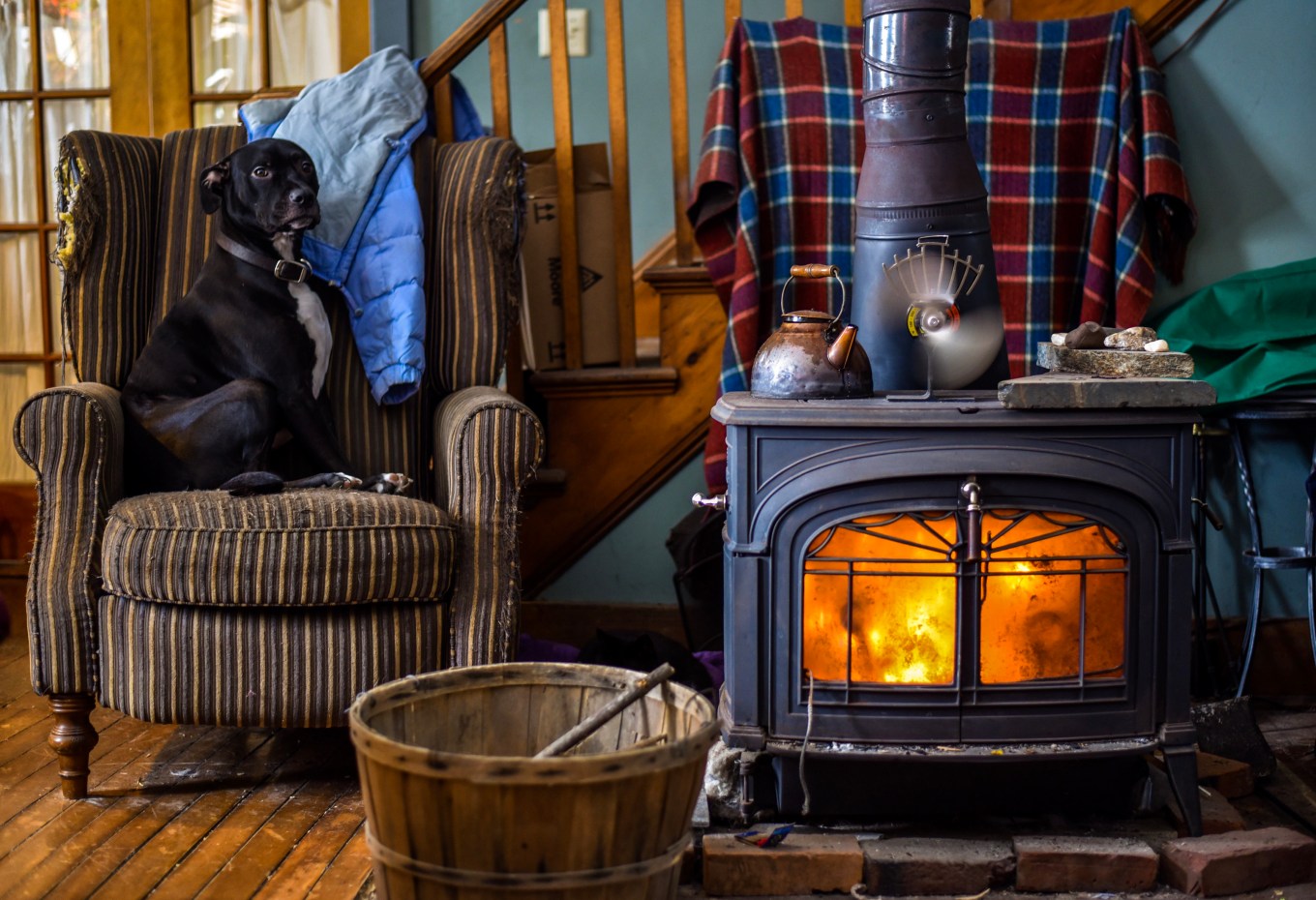Although wood stoves might conjure up images of a smoke-belching potbelly in a backwoods cabin, today’s models are efficient heaters that meet U.S. Environmental Protection Agency emission guidelines and reduce heating bills by nearly half when energy prices are high.
Unlike fireplaces, wood stoves can heat a whole room or possibly even your whole house, depending on its layout. And their prefabricated chimney pipes let you install them practically anywhere—even in front of an existing hearth.
But even if you invest in multiple wood stoves to heat your entire house, you’re wise to keep your furnace winter ready. There’s no 24-hour service for wood stoves, and you don’t want to chance a bad cold snap that’ll freeze your pipes.
What Do They Cost?
A good wood stove from a reputable company averages about $3,000-$4,200, including the stovepipe and installation, according to the Hearth, Patio, & Barbecue Association. However, you could spend as little as $1,000 for a small unit from a big-box store, or as much as $10,000 for a stainless steel cylindrical showpiece from Jotul.
Downsides of Wood Stoves
Wood stoves are radiant heaters without blowers or a venting system. That is, you might find yourself chilly in rooms far from the stove or down long hallways. If your house has many levels and a complicated floor plan, you’re looking at buying more than one to get heat to all areas.
Many people find wood stoves attractive, but they lack the big, open hearth of traditional fireplaces while still requiring you to do the same wood chopping and stoking.
If the effort required means you rarely load and light it, you’ve just bought a very expensive plant stand. But using a wood stove for zoned heating can save a bundle, potentially 10%-40% of annual heating costs, says Leslie Wheeler of the Hearth Association. With zoned heating you turn down your thermostat and heat the room you’re in with the wood stove.
If you decide this is the winter to bring in the wood, here’s what you need to know.
Choose a Stove That Fits Your Space
Wood stoves are freestanding units of cast iron, soapstone, or steel that vent through a stainless or galvanized steel stovepipe. You view the fire through a ceramic glass insert in front. Some have a front door that opens if you want to toast marshmallows.
Most stoves have an air inlet that lets you add air to increase the combustion rate to run the stove hot and fast, or decrease intake, creating a lower, slower burn.
“It’s almost like a throttle. When you start up your fire, you want to give it as much air as possible to get it going. If you’re going to be away for the day or you’re going to bed, lower your damper setting so it’s not burning as fast,” says Michael O’Neill, a salesperson with Woodstock Soapstone Co. in West Lebanon, N.H. Manufacturers say the units are safe to run when you’re not at home.
The size stove you need depends on the room’s scale, your home’s insulation, the climate, and the BTU rating of the stove—how much heat it can produce. Most stoves list the square footage they’re designed to heat. Your dealer should help you adjust for variables such as ceiling height, insulation quality, and floor plan.
Good brands include Blaze King, Harman, Jotul, Lopi, Pacific Energy, and Woodstock Soapstone.
Choose the Right Location
Choose a location that lets you load wood with relative ease and enjoy sitting before it. Install it about 12 to 18 inches away from a combustible wall. Each stove style is different, and the manufacturer will list exact clearance specifications. The National Fire Protection Association also sets clearance standards that many municipalities adopt as the basis for their codes.
When there’s a conflict, follow the manufacturer’s requirements; makers test their products and know how much heat they produce. If you lose the manual or buy a house and don’t have the manual, follow the NFPA code.
You can buy a heat shield from the manufacturer to install behind your stove, which lets you adjust clearance rates. You can also make a shield from cement board or tile backer board. Your stove must sit on non-combustible flooring also sold by your wood stove provider, or on a non-reactive material, such as stone or concrete. Flooring costs about $350.
The stovepipe attaches to the top of the stove and runs straight out the roof. If that’s not possible, some stoves can vent out the back through a wall, then connect to an elbow and head up. The top of the stovepipe must extend beyond the roof 2 feet higher than highest portion of the roof that’s within 10 feet of the stovepipe
Check with your municipality regarding permits.
Use Good Wood, Burning Practices
Heat generation depends on the stove’s capacity and the wood you burn. All woods produce more fuel when split, stacked, and left to dry for 8 to 12 months, but ash, sugar maple, and red oak create more heat per log than some others. American elm is average; white pine is low.
You’ll need to remove ashes about once a week and schedule an annual inspection and possible professional sweeping.
Asthma and Allergies
If anyone in your household suffers from asthma or allergies, consider whether a wood stove is the right fit. Wood stoves and inserts can trigger breathing problems, though proper stove maintenance can help mitigate these health issues.
Related:
